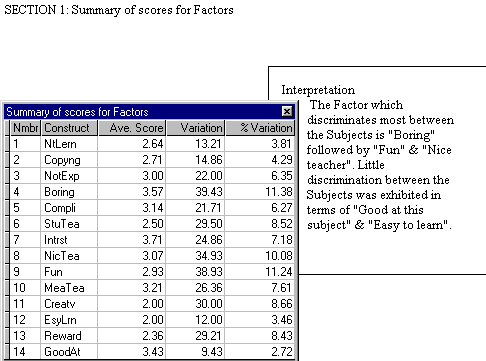ToolTipText: -
StartAnalysis analy.htm - Start to show the Grid status. Click Next or Click or Opp.Click on the main window to get following reports.
or
However, each one of these links effectively rotates the sections for
their own phase of the analysis, so if you are processing a very large
grid it is less time consuming to use only the Next ![]() command.
command.
From inGridX 0.8.0, there is a limited form of direct printout available. As well, images can be captured and tables can be copied for paste special options from any of these screens for inclusion in a report. Use File > Print to print the current form and the background form. Use Edit > Copy or Ctrl+C to copy the main image screen and the displayed tables to the clipboard.
To display Formated Tables associated with each
section you can check the menu item Edit > Formated Tables or the Tables![]() checkbox.
checkbox.
However, when a grid is SAVED in INGRID98 format (ask me for a runtime) all the important screens are appended to the end of the input text file. From Ingrid98.e the textual interpretations are now on the right hand side making non fixed font viewing of the text output a little less risky. Vertical bars are positioned on the screens so that the output text can be converted to tables using the vertical bar (|) as a delimiter.
The plot screens are a little more difficult to
handle because of the flashing features. These toggling plot images can
be individually captured by pausing (use the Step
command in inGridX for what was in Ingrid pressing "P/p") and then creating
an animated GIF file.

The summary tables can be sorted by clicking on the column headings. If you use Ctrl+C (Edit > Copy) command, both the section's bitmap image and the table are copied to the system clipboard. Using Paste Special you can choose either the bitmap or text to paste into another program. Prior to using the Copy command the interpretation text checkbox can automatically place its text onto the system clipboard.
Notes:-
If this were a decision grid (one where all the constructs were aligned in a favorable direction. (i.e., high score was the desired end of the scale) then you could tell whether the strength of feeling was good or bad if the TOTAL was positive or negative. However, in interpreting Principal Component Analysis the sign here does not count for much in explaining the paradigm.
In this grid, however, because there was a mixture of positive and negative factors (i.e., FUN, BORING etc.) only the strength of feeling could be measured.